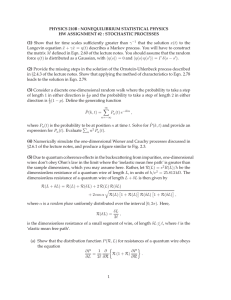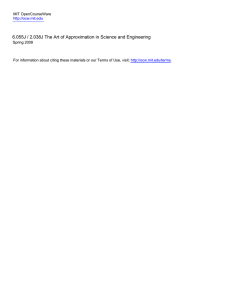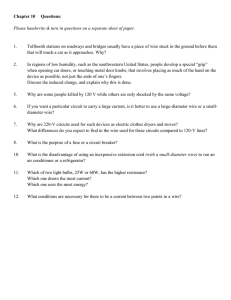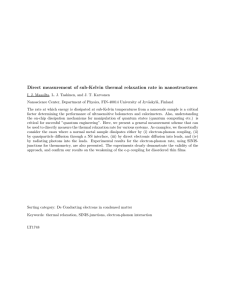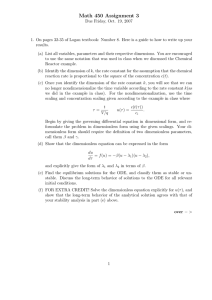(1)
advertisement
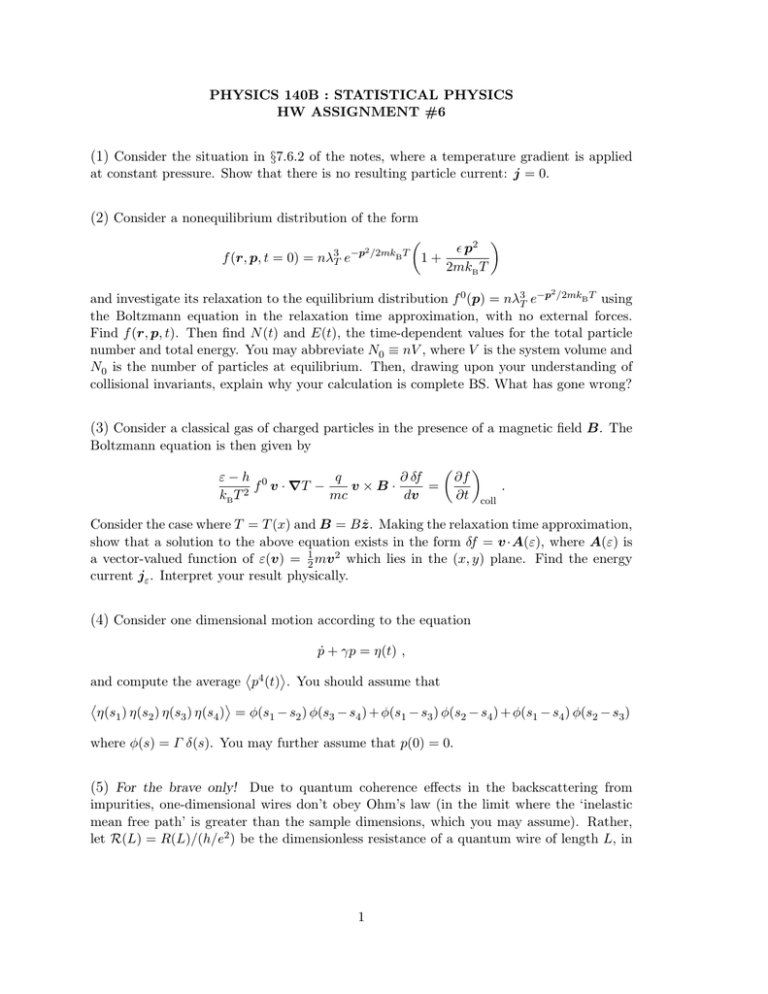
PHYSICS 140B : STATISTICAL PHYSICS HW ASSIGNMENT #6 (1) Consider the situation in §7.6.2 of the notes, where a temperature gradient is applied at constant pressure. Show that there is no resulting particle current: j = 0. (2) Consider a nonequilibrium distribution of the form f (r, p, t = 0) = nλ3T −p2 /2mkB T e 1+ p2 2mkB T 2 and investigate its relaxation to the equilibrium distribution f 0 (p) = nλ3T e−p /2mkB T using the Boltzmann equation in the relaxation time approximation, with no external forces. Find f (r, p, t). Then find N (t) and E(t), the time-dependent values for the total particle number and total energy. You may abbreviate N0 ≡ nV , where V is the system volume and N0 is the number of particles at equilibrium. Then, drawing upon your understanding of collisional invariants, explain why your calculation is complete BS. What has gone wrong? (3) Consider a classical gas of charged particles in the presence of a magnetic field B. The Boltzmann equation is then given by ε−h 0 q ∂ δf f v · ∇T − v×B· = 2 kB T mc dv ∂f ∂t . coll Consider the case where T = T (x) and B = B ẑ. Making the relaxation time approximation, show that a solution to the above equation exists in the form δf = v ·A(ε), where A(ε) is a vector-valued function of ε(v) = 12 mv 2 which lies in the (x, y) plane. Find the energy current jε . Interpret your result physically. (4) Consider one dimensional motion according to the equation ṗ + γp = η(t) , and compute the average p4 (t) . You should assume that η(s1 ) η(s2 ) η(s3 ) η(s4 ) = φ(s1 − s2 ) φ(s3 − s4 ) + φ(s1 − s3 ) φ(s2 − s4 ) + φ(s1 − s4 ) φ(s2 − s3 ) where φ(s) = Γ δ(s). You may further assume that p(0) = 0. (5) For the brave only! Due to quantum coherence effects in the backscattering from impurities, one-dimensional wires don’t obey Ohm’s law (in the limit where the ‘inelastic mean free path’ is greater than the sample dimensions, which you may assume). Rather, let R(L) = R(L)/(h/e2 ) be the dimensionless resistance of a quantum wire of length L, in 1 units of h/e2 = 25.813 kΩ. Then the dimensionless resistance of a quantum wire of length L + δL is given by R(L + δL) = R(L) + R(δL) + 2 R(L) R(δL) q + 2 cos α R(L) 1 + R(L) R(δL) 1 + R(δL) , where α is a random phase uniformly distributed over the interval [0, 2π). Here, R(δL) = δL , 2` is the dimensionless resistance of a small segment of wire, of length δL < ∼ `, where ` is the ‘elastic mean free path’. (Using the Boltzmann equation, we would obtain ` = 2π~nτ /m.) Show that the distribution function P (R, L) for resistances of a quantum wire obeys the equation 1 ∂ ∂P ∂P = R (1 + R) . ∂L 2` ∂R ∂R Show that this equation may be solved in the limits R 1 and R 1, with P (R, z) = 1 −R/z e z for R 1, and 1 −(ln R−z)2 /4z e R for R 1, where z = L/2` is the dimensionless length of the wire. Compute hRi in the former case, and hln Ri in the latter case. P (R, z) = (4πz)−1/2 2
